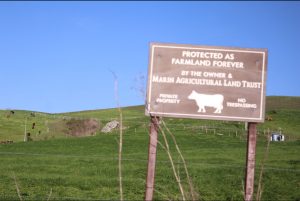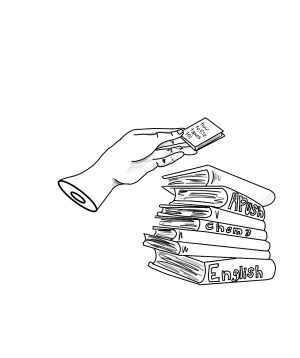Student Journalist Handbook
For access to the full handbook, students should refer to their classroom resources. All students pass a handbook quiz before publishing each year in the 3-year program.
An abbreviated version of our commitments are posted here. This handbook is updated yearly by the incoming editors-in-chief with feedback from the student staff.
Purpose
The Redwood Bark endeavors to inform, explain, encourage and entertain the student body and staff of Redwood High School of happenings in the schools, the community and beyond. The Bark is a limited public forum for student expression as well as a learning instrument for the student journalists of Redwood High School.
Audience
The student body is the primary audience for the Bark , including the faculty, staff, and parents of Redwood High School, the local community and other scholastic programs. Material may not necessarily reflect the views, opinions, or concerns of the faculty, administration, or the school board, but the material will reflect the interests of the student body. The Bark encourages criticism and comments from all members of the community. The Bark attempts to provide an analysis for readers in a broad, fair, and accurate manner on all subjects. The publication also seeks to provide forums for the expression of students, faculty, and community opinions.
Conflict of Interest
Staff members should avoid working with story topics they are involved in wherever possible. Business or advertising interests of the newspaper shall not be allowed to influence news content. Staff members should not allow connections to school organizations, friends, parents or the community to conflict with honestly and fairly reporting the facts, and in accordance with the paper’s editorial policies. If an outside activity, interest or personal relationship could affect, or appear to affect, the handling of an assignment, the work may be reassigned. If you are unsure if your story is a conflict of interest, talk to an editor-in-chief or the adviser.
Corrections and retractions
The Bark staff strives for accuracy and fairness in all content. If a significant factual error is published, a correction or retraction will be published on the website’s version of the article. If there is a dispute regarding whether or not an error was published, the editors-in-chief shall have the final say as to whether a correction or retraction is published. Online retractions are at the discretion of the editors-in-chief.
Post-publication changes
Once a story is “glossy,” it’s over. Publications do not generally make changes to the stories they publish. They should be factually correct to begin with, and debates over the complex issues behind stories
can run for hours, an amount of time no publication has. The only changes the Bark generally makes after publication are important factual corrections or mistakes. (The appropriate section editor may make simple factual corrections and misspellings, but the editors- in-chief must approve all changes.) Any complex changes must be made by the editors-in-chief.
Discipline
All school policies regarding discipline apply to the Advanced Journalism classroom, off-campus Bark activities, trips, and after- hours work sessions. The adviser, acting in his or her capacity as teacher, may discipline a student for any behavior in violation of school policy, but not for a disagreement regarding content not covered by Ed Code or the law. In severe disciplinary cases, individuals may lose the ability to publish content in the paper, although they may still be required to write stories or create work for academic credit.
The Editors-in-Chief may also remove a student from any position held for failing to meet ethical standards, deadlines, or other responsibilities. Ethical or behavioral issues will result in the adviser removing the student from responsibilities.
Editorials
Editorial topics will be decided during story planning at the beginning of each cycle and assigned to staff members to write. Unsigned editorials, editorial cartoons, and Barks and Bites reflect the opinion of a simple majority of the editorial board, here defined as the entire staff of the Bark that meets during the class period. Columns and other opinion pieces with bylines reflect the opinions of the writer. Editorials in the Bark do not represent the thoughts of the adviser, administration, or school district.
Plagiarism
By now, you should be well-schooled in what constitutes plagiarism, which here will be quickly defined as “presenting someone else’s work as your own.” Since it is expected that you understand what plagiarism is by the time you enter Nonfiction or Advanced Journalism, you should realize that committing an act of plagiarism will have severe consequences, including any or all of the following:
- Immediate removal from staff or refusal of entrance to the following year’s program.
- Failure (0 grade) for that issue’s work.
- Disciplinary action from the school
If you need clarification on whether or not you are committing plagiarism as you write, review the staff & adviser-created AI policy and research plagiarism online, or simply ask your adviser before turning the copy in. Of course, you should do this before the deadline.
Letters to the editor
Letters to the editor are accepted and may or may not be published based on the decision of the opinion editors and editors-in-chief as to whether or not the material will be thought-provoking, educational,
entertaining or have other content of merit. Letters should be emailed to eic@redwoodbark.org, signed and no longer than 500 words. Unsigned letters will not be published. The Bark staff reserves the right to edit letters for length and clarity if the author’s essential intent or meaning is not changed significantly.
Letters should be printed without reply or rebuttal.
Ownership of content
All letters, columns, stories, photos, and art are copyrighted material owned by both the Bark and the author/creator at the time they are submitted for publication unless otherwise negotiated prior to
submission. As owners of the material, the Bark and the content creator both may use the work as they wish post-publication, including republishing the content elsewhere and submitting work to contests.
Selection of editors
Applications that reflect the “Journalist of the Year portfolio guidelines” are required to apply to the advanced program. In late spring, the editors-in-chief for that year, with the adviser, will review applications and portfolios to decide who will fill next fall’s editorial positions, with the adviser and each editor-in-chief receiving one vote regarding each position. They will use the rubric mentioned above along with anecdotes of the students’ work in the program, keeping in mind that a diverse, well-rounded staff is the goal.
Before the second semester begins, the adviser and editor(s)-in-chief will select who will fill positions for the following semester in the same process. The number and type of positions available may change from semester to semester as the editors-in-chief and adviser see fit. Applications will be made available to staff members before selection occurs. In addition, before editorial positions are announced, the chosen
editor(s)-in-chief-elect for the upcoming year will be consulted before finalizing and releasing positions. All positions are semester-long, except for editors-in-chief, which is a year-long position.
CODE OF ETHICS
(Courtesy of the Society of Professional Journalists)
- Seek truth and report it. Journalists should be honest, fair and courageous, in gathering, reporting and interpreting information.
- Minimize harm. Ethical journalists treat sources, subjects and colleagues as human beings deserving of respect.
- Act independently. Journalists should be free of obligation to any interest other than the public’s right to know.
- Be accountable. Journalists are accountable to their readers, listeners, viewers and each other.






